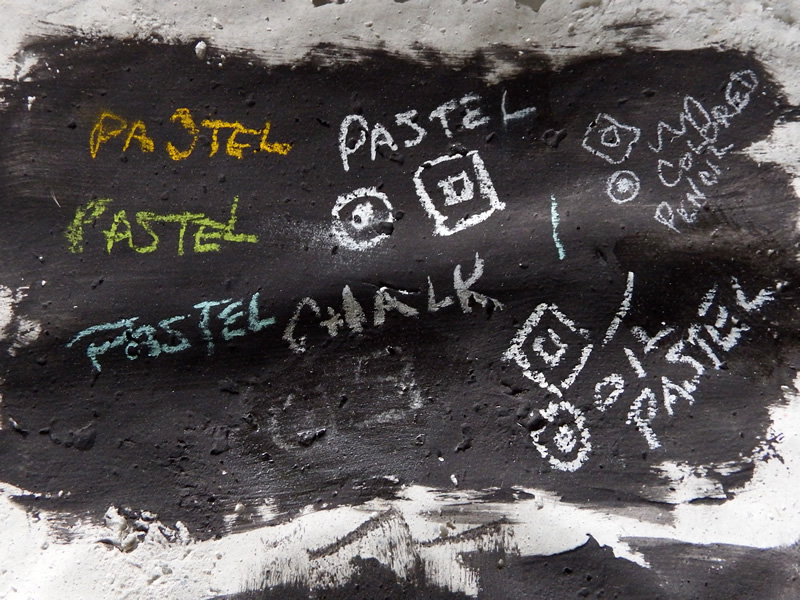
After making and putting a smooth finish on bowls from the black papier maché clay recipe, the next thoughts turned to “How will I decorate these?”.
One of the ideas involved making a series of black and white bowls, with chalk or chalk-like designs on the outside. That (such a surprise) begged other questions…
What I Wanted to Know
Which materials would work best with this coating or the spray finish that goes over it?
Which looked best?
Which ones are easiest to manipulate on this surface?
How will the protective acrylic spray react with the decorative materials?
A handy dandy test sheet helped answer some of those and a little nosing around online helped with others. One unexpected helpful result of the wavy, lumpy, holey nature of the sheet is that it was a demanding test of how the materials would handle. The curved sides of bowls would be a walk in the park after this surface.
Once the black papier maché finish was painted on the test sheet and dried, I tried drawing on it with colored pencil, oil pastel, pastel and chalk.
What I Found Out
Colored Pencil
As you can see in the photo, the colored pencil was lighter and made a thinner line. It was fairly easy to control, but being so thin meant that a bump in the surface could accidentally throw the line way off. And it would be difficult to correct.
Chalk
The chalk was easy to apply and had a nice, thick (almost too thick, proportionately, for a small bowl) easily visible line. But, it brushes off like the dust it is and is a bit tough to control.
Pastel
The pastel applied more smoothly than the chalk, but also has the tendency to smudge easily. It has more stick-to-it-iveness than chalk, but not enough. A fixative, like you’d use for charcoal or pastel drawing might make it more workable.
Oil Pastel
This was the easiest to work with. It shows up strongly, doesn’t smudge easily and lets you control it well as you draw. Its most serious drawback is that its probably not the best idea to spray a protective coat on it.
Researching it, I found out that it never completely dries. So covering it with a finish coat could lead to peeling or bubbling away from the bowl’s surface in the future. Dang!
Now What?
Other options that come to mind are:
- Painting with acrylic paint in a drybrush style
- Using colored pencil with a dulled point to thicken the line and going over areas multiple times to build up the density of the pencil lines. (Sounds like a lot of extra work.)
- Trying pastel with a fixative
- Mixing ground chalk or pastel with acrylic medium and painting it on
Some of the questions have been at least partially answered, but until I find the right material to make the marks, the spray finish reactions will remain a mystery.